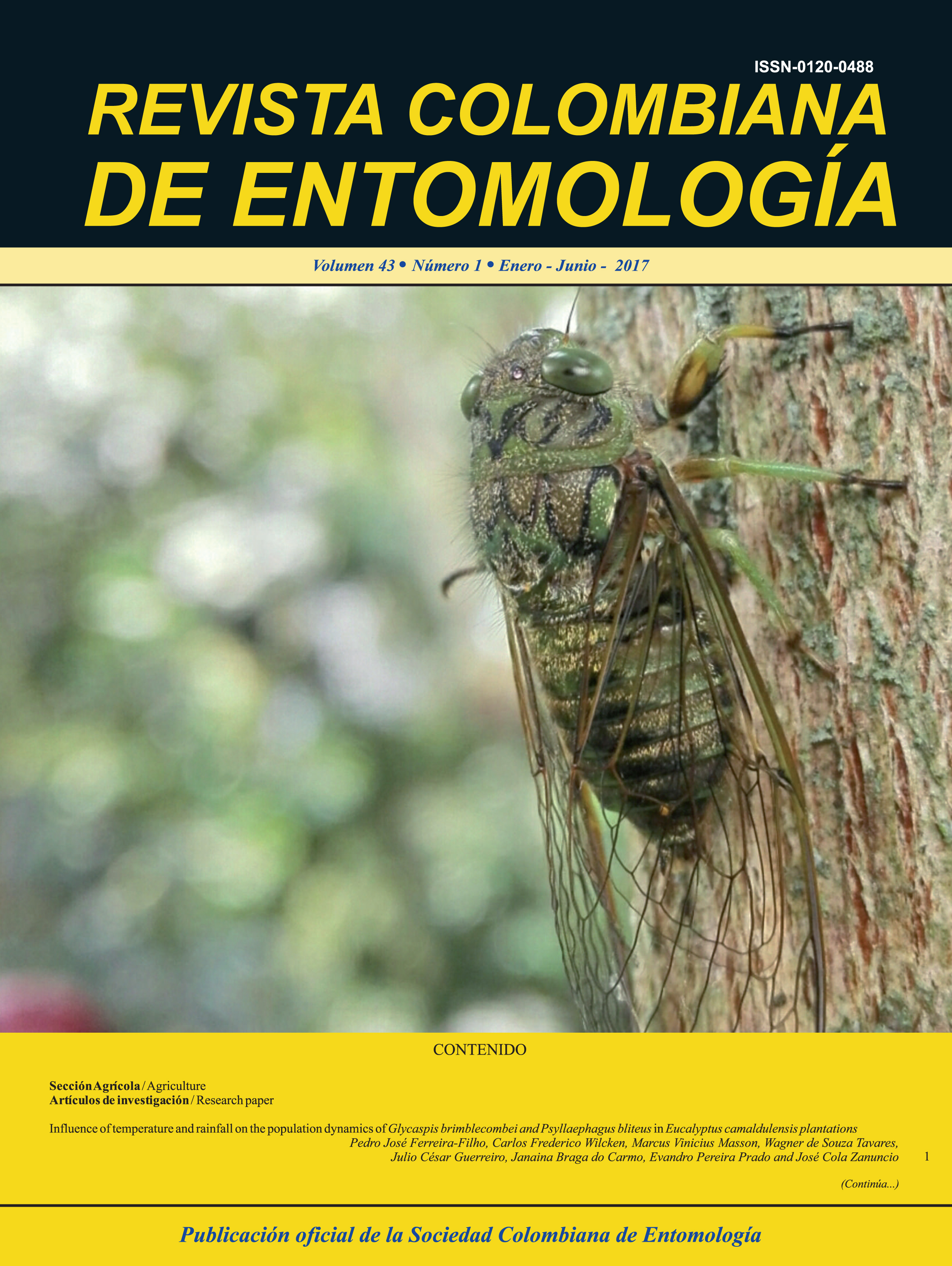Effect of the spatial arrangement of agroecosystem on bee (Hymenoptera: Apoidea) diversity in potato (Solanum tuberosum) crops of Antioquia, Colombia
Keywords:
Andes, Biodiversity, Pollination, Survey, Flower visitorsMain Article Content
The potato Solanum tuberosum is one of the most important products worldwide and is cultivated under different production systems. Its greatest diversity is concentrated in the South American Andes, where it originated; however, little is known about native pollen vectors that may mediate in sexual reproduction, possibly because potato multiplication at the commercial level is carried out through its tubers. In order to understand the effects that this type of agro-ecosystem may have on the diversity of pollen vectors, particularly bees, an inventory was raised in three types of production systems of the department of Antioquia: monoculture, association with other cultivated species, and association with patches of natural vegetation or forests, which were surveyed in transects located within the crops, on the edges and in its matrix. In this work, the difference between transects, plots, and production systems was recorded. The importance of the patch conservation of natural vegetation and the maintenance of the vegetal diversity around the crops for the preservation of wild bees was demonstrated in different production systems. Finally, it was concluded that the design of the agro-ecosystem plays an important role in the bee community structure in potato crops
Downloads

This work is licensed under a Creative Commons Attribution-NonCommercial-ShareAlike 4.0 International License.
Authors retain the copyright on their work and are responsible for the ideas expressed in them. Once a manuscript is approved for publication, authors are asked for a publication license for the term of legal protection, for all territories that allows the use, dissemination and disclosure of the same.

